Types of Rope for Outdoors: Revealing The World of Ropes
For many years now, ropes have been in existence even though they were not that much advanced as the ones we are having nowadays but were used to perform same functions. The materials that are used to make these ropes are usually a key factor to consider when shopping for ropes. Another key thing that you should be able to check is the stretching ability of these ropes and how also to implement them practically.
[the_ad_group id=”21″]
You know you cannot find a rope that is generally good to perform every function right? But you can just find the correct one for you depending on what you want to do with it. Below are some of the most common types of rope for outdoors, synthetic and natural ones and also their characteristics.
Synthetic and Natural Ropes
A rope is usually an essential thing in our everyday life. It really doesn’t matter whether you are using it to tie things up so that they don’t fall apart or you have a specific function for it, the rope will always help in many situations. Survivors usually ensure that they carry a rope in their survival kit because a rope can save your life since it can be used for many purposes.
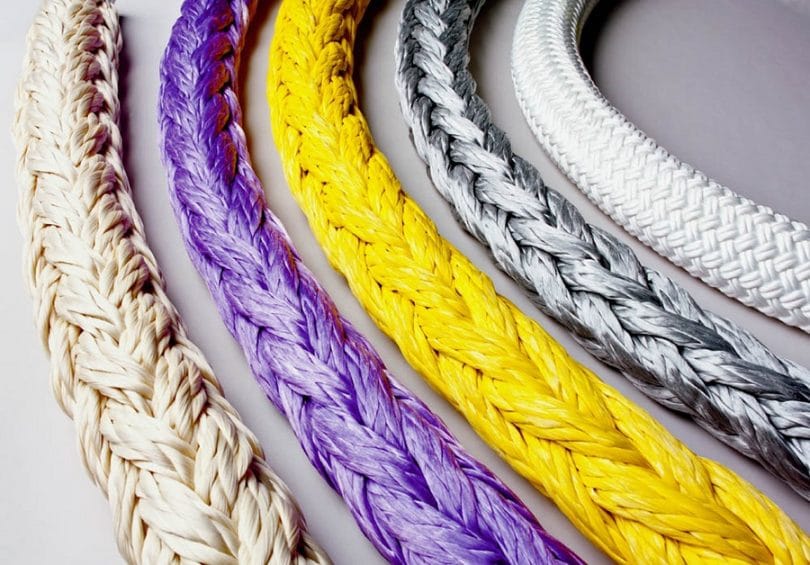
With all these being said, cowboys and landscapers, however, prefer to use ropes made of the natural fibers. For the ropes made of synthetic fibers, you can use them to do a wide variety of things and this is why synthetic ropes have always been a bit more expensive than the natural ropes.
Characteristics of Natural Rope
Looking at the history of these natural ropes, you will find that they were first invented and put to use by the Egyptians during the 4000 BC era. They could use materials like the hair, leather, and grass to make their ropes, and during 3000 BC the Chinese followed by making a rope out of hemp.
Making ropes out of hemp was a practice that was done for a long time and they would also use things like linen, silk, cotton, sisal and manila along with it. Looking closely, you will realize that some of these materials that are derived from plants are widely known simply because they have some properties that will enable them to become waterproof and they are also much stronger.
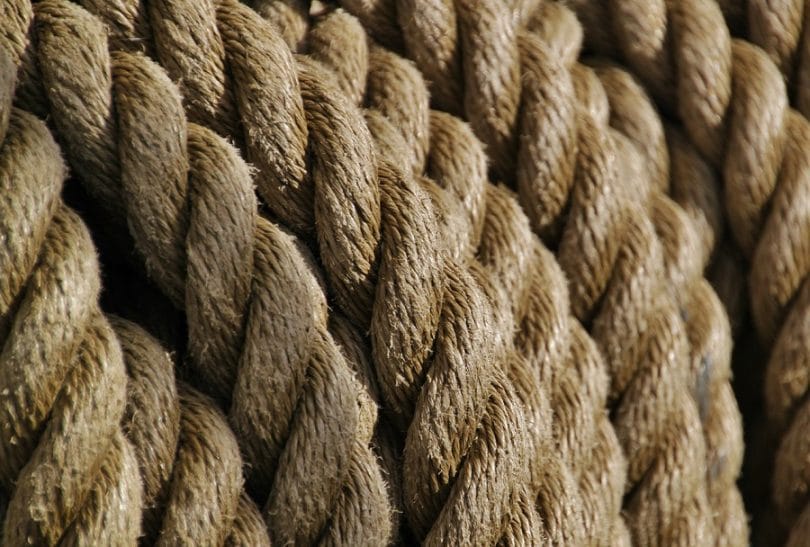
Natural ropes can always be used for climbing. They are always heavy and this is usually one of the reasons why nobody likes carrying them around. They also have a low resistance in time because they are always affected by things like the UV light and humidity among other environmental factors.
The natural ropes are also prone to hardening and rotting. They are mostly used by farm keepers, landscapers, sailors and sometimes they are also used by climbers.
Types of Natural Rope
- From Sisal rope: the name of this rope is derived from the plant that is used to make them. The name of this plant is Agave sisalana. This material is most commonly used and is popular because it doesn’t cost much, it is cheap and readily available. It usually has this tendency of becoming coarse and a little bit bulky. Ropes made of sisal are usually strong, durable, and stiff and also has the ability to resist any damage that can be caused by salty water. The rope can be damaged by the moisture and chemicals, though.
- Baling twine: this is just sisal but the only difference is that it has a diameter that is much smaller. This is usually good when used to tie up things like the hay bales and also when you want to attach some materials to the blinds. Just like the sisal rope, the baling twine is also resistant and can break at a weight of about 350 pounds. The fibers used to make up this rope can also not be used separately.
- Manila rope: this is basically a rope that is made using hemp. The rope is usually considered to be of high quality and is mostly used in landscaping and decorations. Using a manila rope would be a good idea for stage rigging. This rope is said to be more reliable due to its ability to absorb moisture. The rope is not resistant to water and can also get damaged by direct UV rays.
Characteristics of Synthetic Ropes
When the synthetic rope was being manufactured, the manufacturers were having some specific features in mind. Synthetic ropes are usually made of materials such as polyester and nylon, Kevlar can also be used. Synthetic ropes can sometimes be waterproof depending on its type.
They can also stretch. Synthetic ropes are always lighter when compared to other ropes that are made using natural fibers. These synthetic ropes usually do have different features.
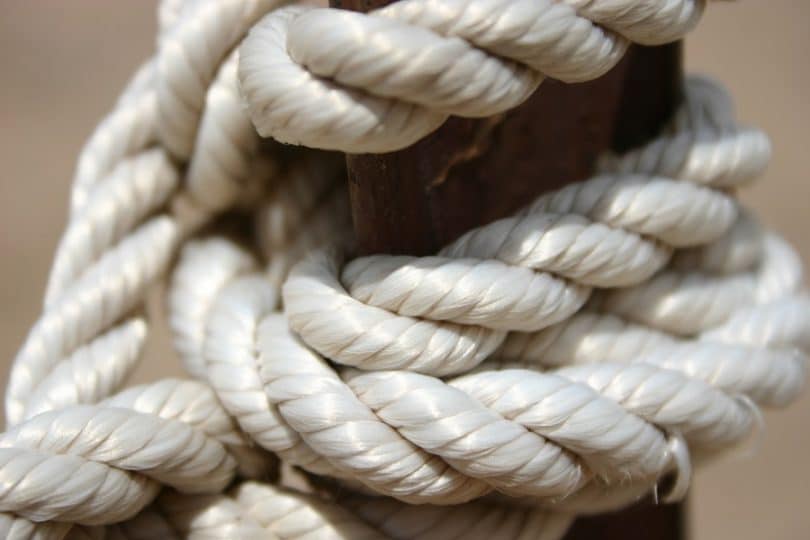
For instance, a Kevlar rope is usually resistant to flames and polypropylene rope cannot conduct electricity. Many synthetic ropes of same features and characteristics can also be used for helicopter slings, winch line, towing lines, swimming lane barriers, anchor lines, and many others.
Types of Synthetic Ropes
- Kevlar rope: this type of rope was invented in the 1965 and is said to be much stronger compared to steel. Kevlar ropes usually don’t stretch like the nylon. It also resistant to both flames and rust. The Kevlar rope should not be placed under direct UV light as this can cause its damage. This rope is still amazing even though it is not that immune to damages.
- Nylon: nylon ropes are always in great demand because of its popularity. This usually comes with its ability to stretch. Another characteristic of this type of rope is that it has the ability to absorb a lot of energy, something that makes it become very dangerous if at all it breaks. Some advantages that you will get for using the nylon rope is that it is amazingly strong and is usually not affected by the UV light or chemicals. This type of rope is commonly used by sailors and can also be used for mooring lines.
- Polypropylene rope: this type of rope is made of polypropylene which is a synthetic material. This rope is suitable for use with water since it can’t be affected in any way thus can comfortably be used as swimming lane barriers and can also be used by fishermen. However, the rope doesn’t have any stretch memory so when stretched, it will not come back to the original shape it had before. The rope can also be damaged by friction.
- Polyester rope: for those users who usually don’t like the stretching ropes, this would be the ideal rope for you. Polyester ropes are usually stronger compared to the nylon ropes and it is also relatively expensive. This rope can be suitable for lifting slings due to its ability to highly resist abrasion, the UV light, and heat.
The Ultimate Rope Type that You Might Consider Using for Survival
The paracord or the parachute chord is usually recommended by many survivalists calling it the best gear that one can purchase. Since the World War II, the military has been using this type of rope due to its versatility. The material used for making this rope is nylon but one might ask how comes the paracord is much stronger than these other nylon ropes.
The trick here is that the paracord is usually made using the Kermantile technology which is usually characterized by resilience, flexibility and high strength. The paracord always will have all the features that a nylon rope will have. Additionally, it will also have a sheath that does not tear easily and a stronger inner core. To learn how to put your paracord to good use, check out our earlier article on this topic.
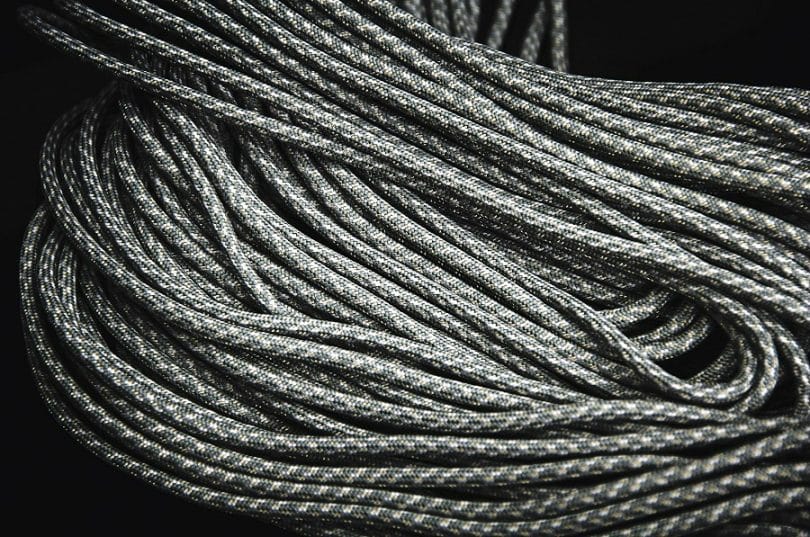
The paracord mainly is used for things like hiking, climbing, tieing things and fishing. It can also be used when you want to improvise a hammock, to sew wounds and materials, floss and also to start a fire. The strands that are located near the core are always thin enough thus enabling it to be used as a thread. Do read our article on how to tie the best knots for your hammocks for reference.
Pick Up The Rope and Climb The Trees
You will always have 3 strand ropes at the basic level comprising of inner woven strands, 3 of them. There is usually both the soft and hard layer. This rope with three strands are known to be old and very traditional and can just handle abrasion very well and are also have the ability to stretch.
For the layer, there is always some difference between the soft layer and the hard lay, however, they are always easy for one to remember.
[the_ad_group id=”22″]
For the hard lay, the strands are always a bit difficult for one to separate while they are easily picked in case of the soft layer. The soft layer can also be braided faster compared to the hard lay but both of the ropes can usually be handled easily without the tools due to their flexible nature.
Moving away from the 3 strand rope, you will find another version of rope which is more solid and is made up of 12 strands. This rope is usually strong and last for long. Due to its bumpy nature, this rope feels a little bit hard when you have it in your hands. For this type of rope, you will find some having a tensile strength of about 8000 pounds with twisting resistance and a better knot retention.
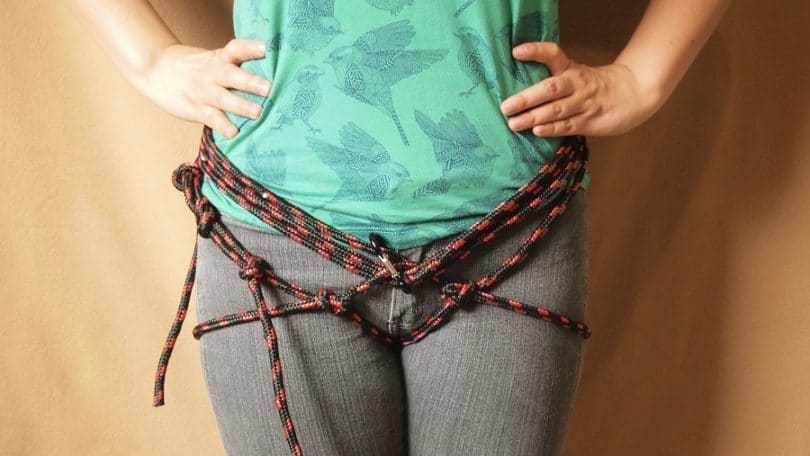
When you continue to move up, you will meet the 16 strand rope which is also a type of rope that is always cover dependent. It also has some interior core that serves no purpose when it comes to bearing loads but it does keep the rope from flattening thus helps in maintaining the round shape.
This rope is usually durable and can last for long not forgetting about its flexible nature. Compared to the 24 strand rigging line, this rope can still do a better job when it comes to natural crotches and rigging.
For the 24 strand rigging line, it is always double braided with the load being shared between the core and the inner wove. This rope is usually non-rotatable and is also hand sliceable thus it cannot jam, twist or hackle your hardware.
For tree climbing, it is also important to note the difference between polyester and the nylon core. Nylon core together with the other husky ropes or just the bull ropes which are sketchy are usually much flexible. Using nylon to make these ropes always gives them the ability to absorb more energy. On the other hand, the polyester core is usually less stretchy and this makes them have a relatively less breaking strength since the core does not absorb more energy.
Sailing with The Best Type of Rope
For sail controls, you can always use the Dacron or the polyester line. These can also be used to raise the sail by the haulers. Due to its inability to stretch, the rope will usually maintain its shape.
For towing other boats or even the lifeboats, polypropylene will just be the ideal rope to use. This can also be used for heaving lines. Maybe the big advantage of using this type of rope is that it has the ability to float. This can be used to save a drowning person overboard.
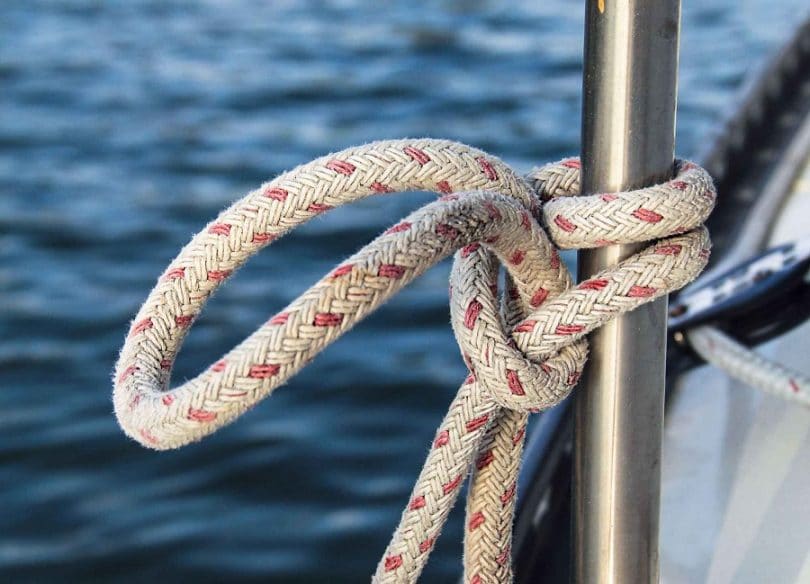
Nylon rope also has some nautical appliances as too. We have already learned that it has the ability to stretch thus allowing it to absorb the shock load of a boat when moving around the dock. Nylon ropes are also resistant to the UV light hence no damage can be done to it even if you leave it outside in the sun for a while. The rope can also be used as 3 strands or a single braid.
Types of Rope that You Can Use on Your Ranch
The 4 strand poly rope have now been used for only a few years and they proved to be good when it comes to roping the wind. They are usually heavy but can be thrown on long ways. Additionally, they also do combat the force brought about by the wind thus making it be able to go further when thrown in the wind.
You cannot use something like the 3 strand poly rope simply because it is much lighter thus cannot go any further when thrown into the wind. This will also depend on whoever is using the rope.
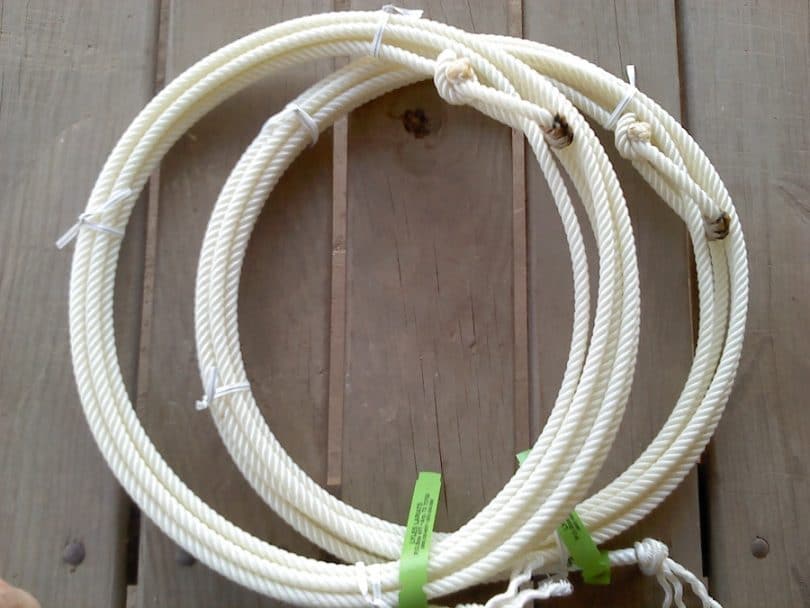
Some people usually might find it difficult to carry much rope on one hand or maybe they just have small hands, this will now force such kind of people to use the ropes with a smaller diameter. This can make them feel much safer hence they will also be able to control the coils with a lot of ease.
When it comes to the rawhide rope, you will notice that it is a little bit heavier. This rope is usually based on the right twists thus it is suitable for right-hand use.
Rock Climbing Ropes
Twin ropes
These are usually two separate ropes but of the same size that is designed to be put together through each piece of your gear. Thin ropes of about 7.6mm each are usually used. This type of rope is usually used in ice or the ultra-long rocks.
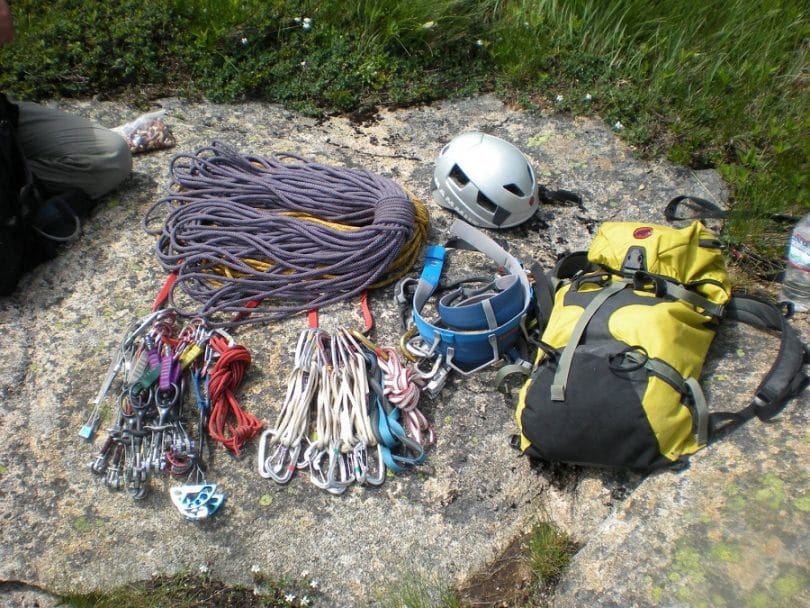
The twin ropes are usually suitable for these type of expeditions since they provide the light-weight gear and also are able to offer rappels of full length and higher safety margins.
Single ropes
This type of ropes always varies in length even though the standard length should be around 10.5mm x 50m, also, the width is usually around 9.5mm to 11mm. A lot of people mostly gets discouraged with this rope mostly because it is thinner but this can really help since you might sometimes need a lighter rope but with good rappelling ability.
Double or half ropes
On the contrary to the twin ropes, this type of rope uses two ropes separately but of the same size. These are then independently clipped into the gears. They are always thicker compared to the twin ropes with a width of around 8.8mm. This usually helps to compensate for the other rope if it fails when holding a fall.
The security provided by this kind of rope is usually preferred by the climbers who likes taking the long and dangerous traverses and also some razor sharp rocks. This also uses the belay method which enables the user to independently control each of the ropes being used.
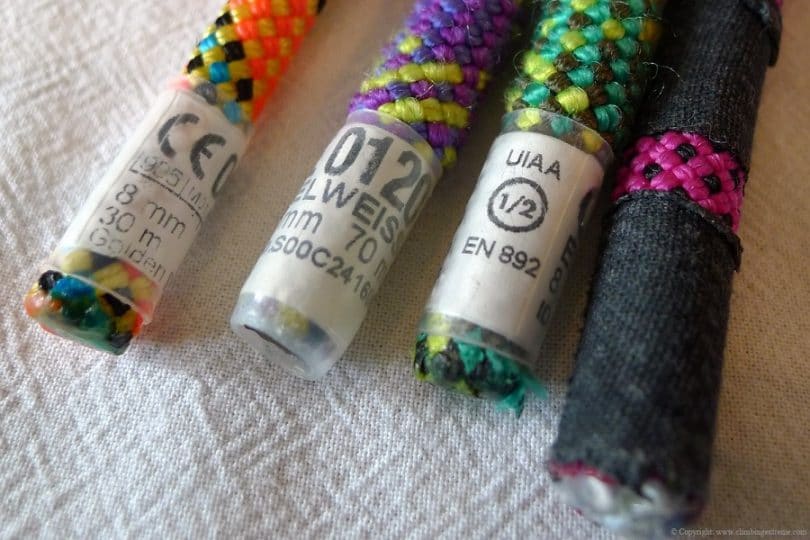
Anyway, when handling these heavy duty ropes, you need to put in mind that the synthetic which lines can be used. Actually, this has now made things a lot simpler since one does not have to go through troubles such as crossovers, something that is a lot common with the winch lines made of steel.
[the_ad_group id=”23″]
A crossover caused by the steel winch lines can usually be dangerous and also consumes a lot of time when you try to fix them on the other hand, the winch lines made of synthetic materials are usually maneuverable and more adjustable.
Conclusion
As you have seen already, there are a lot of varieties available these days when it comes to ropes. The best thing for you is just to focus on the purpose for which you want to use the rope for then go for the rope type that you will find to be suitable for your needs.
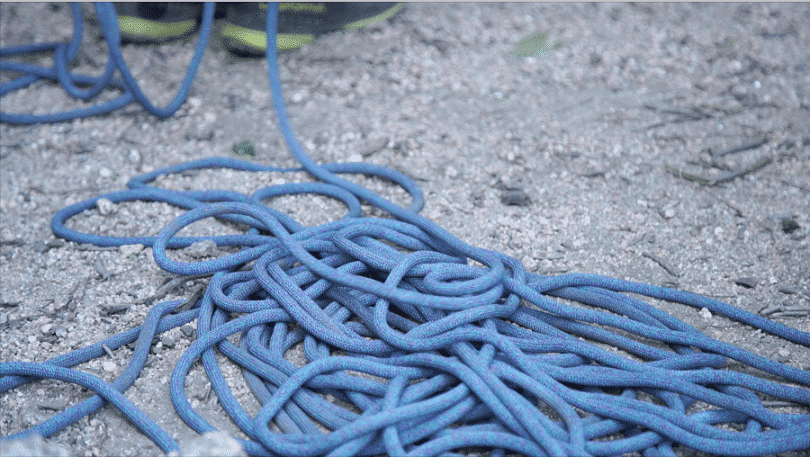
If you want to keep some rope with you for future use, you can then choose the rope type based on the environment in which you are in. keep in mind that you can use polypropylene rope in or just around the water while the ropes made of nylon can be very good when used in the forest. Make sure you pick just the correct rope for the right purpose.



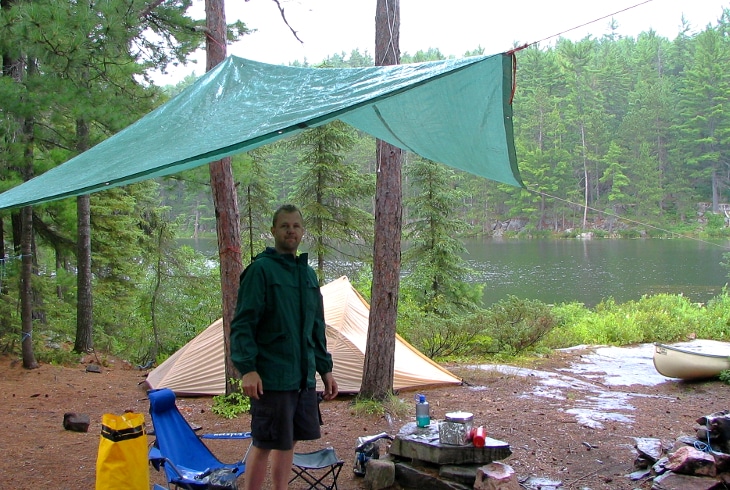
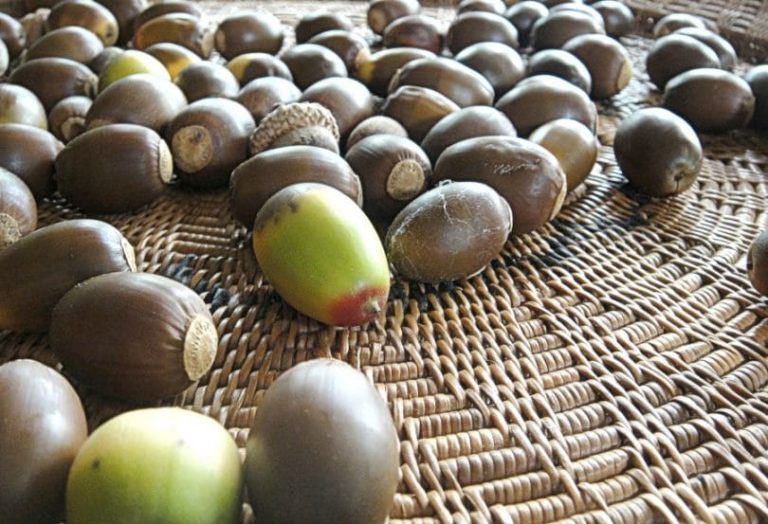
I never knew there are so many types of ropes. I was always under the assumption that there are only two types of rope, you know that cheap stuff you buy at the store, and the paracord. I know ropes come in handy when camping or backpacking and that they have many uses. I am not too sure about the other types of rope, but from the research ive done on paracord i know that it is the way to go as far as the best type of rope you want to use.
It is a common misconception that ropes only differ in color and thickness. The truth is, they differ in weave, material, and overall strength. To determine the ideal rope to obtain, backpackers should first identify their needs and what amount of cord strength or cord length should be ideal based on their requirements.
I never knew there are so many types of ropes. I was always under the assumption that there are only two types of rope, you know that cheap stuff you buy at the store, and the paracord. I know ropes come in handy when camping or backpacking and that they have many uses. I am not too sure about the other types of rope, but from the research ive done on paracord i know that it is the way to go as far as the best type of rope you want to use.
It is a common misconception that ropes only differ in color and thickness. The truth is, they differ in weave, material, and overall strength. To determine the ideal rope to obtain, backpackers should first identify their needs and what amount of cord strength or cord length should be ideal based on their requirements.
The rope used by mankind in various fields of its activities. Clothing and jewelry, amulets and weapons, furniture and housing at different times and in different Nations were made with the use of this greatest invention of man. There was even a rope script. It’s amazing how simple and useful this invention is. Of course, choosing the right rope can not only help in a difficult situation but save a life. We need to approach to this choice very attentively.
It is such a feat how ropes have gone a long way from ancient times to what we utilize today. As you’ve said, the influence of ropes have expanded to other things such as accessories and jewelry. In selecting the best rope to have, I really recommend identifying the requirements first to make sure you get the best rope based on your needs.
The rope used by mankind in various fields of its activities. Clothing and jewelry, amulets and weapons, furniture and housing at different times and in different Nations were made with the use of this greatest invention of man. There was even a rope script. It’s amazing how simple and useful this invention is. Of course, choosing the right rope can not only help in a difficult situation but save a life. We need to approach to this choice very attentively.
It is such a feat how ropes have gone a long way from ancient times to what we utilize today. As you’ve said, the influence of ropes have expanded to other things such as accessories and jewelry. In selecting the best rope to have, I really recommend identifying the requirements first to make sure you get the best rope based on your needs.